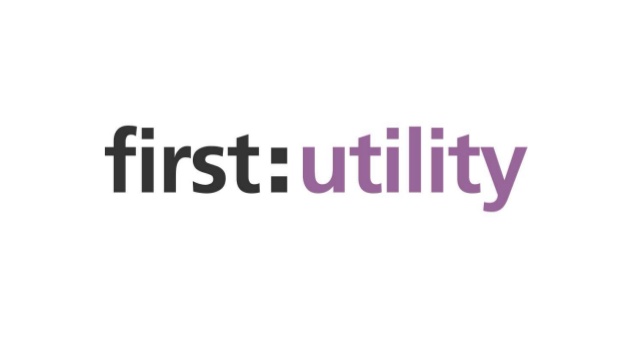You Ask, We Answer: What are the Systemic Problems and Risks Associated with GitLab?
Here at Sirius, we often get asked, "What are the common and systemic problems with GitLab? Are the risks associated with self-managed deployments too high, or is the platform truly ready for enterprise scale?" This is a very good question, and one that deserves a clear, honest answer. We understand that we all tend to worry more about what might go wrong than what will go right when making a purchasing decision, and actively search for potential problems.
We want to be upfront: GitLab aims to deliver a comprehensive DevSecOps solution. However, relying on this integrated promise without understanding the underlying vulnerabilities and architectural limitations can expose your organization to significant risk. This is particularly true because the core efficiency promise is often undermined by accelerating instability and a transfer of security liability to self-managed customers. This article will honestly explain the operational, security, financial, and technical factors that pose problems for the GitLab platform, ensuring you are educated on the "good, the bad, and the ugly" before making a foundational technology choice.
Section 1: Operational Stability and Availability Deficits
One of the most concerning problems is the degradation of Operational Stability, evidenced by a sharp and accelerating increase in service disruptions.
1. Accelerated Trend of Service Disruption
Analysis of platform incidents shows alarming trends in both frequency and severity.
- Frequency: The platform recorded 76 reported incidents in 2023, which increased by approximately 21% to 97 incidents in the following year (2024).
- Severity: The total duration of platform outages has accelerated dramatically. While the platform recorded 798 hours of service disruption across the full year of 2024, preliminary data from the first half (H1) of 2025 indicated 59 incidents totaling over 1,346 hours of service degradation.
- Systemic Failures: This high volume of severe duration metrics points toward deep-seated architectural deficiencies. Incidents in H1 2025 included 20 partial service disruptions (34% of incidents), 17 instances of degraded performance (29%), and 7 full service outages, totaling over 19 hours of complete platform downtime.
2. Architectural Fragility and Data Loss Risk
The historical record demonstrates GitLab’s vulnerability to configuration flaws and unexpected load.
- Database Incident: A serious database incident in 2017 resulted in the unacceptable loss of six hours of operational data for GitLab.com, including critical elements such as merge requests, issues, and credentials.
- Configuration Errors: The failure cascade during this incident was exacerbated by critical configuration errors, such as an inadequate setting for max_wal_senders, leading to a database lockup and forcing recovery via an outdated Logical Volume Manager (LVM) snapshot taken six hours prior. This confirms a historical potential for significant Recovery Point Objective (RPO) failures.
Section 2: Security Risks and Catastrophic Customer Exposure
GitLab faces continuous exposure from a high volume of critical security vulnerabilities (CVEs), transferring substantial security liability to customers using self-managed installations.
1. High Volume of Critical Vulnerabilities
The platform maintains a high velocity of vulnerability disclosure, reflecting persistent weaknesses across core components.
- Authorization Flaws: A recurring pattern involves flaws in authorization logic, such as improper access control in the runner API (CVE-2025-11702), incorrect authorization allowing write operations via GraphQL (CVE-2025-11340), and missing authorization in manual jobs, which exposes sensitive CI/CD variables (CVE-2025-9825). These pose direct threats to repository confidentiality and data integrity.
- Supply Chain Risk: Critical security flaws have been identified within CI/CD pipeline execution mechanisms that allow unauthorized pipeline jobs or critical arbitrary branch execution. This enables threat actors to run the CI/CD pipeline of any GitLab user, representing an extreme supply chain risk.
- DoS Vectors: Numerous high-severity denial of service (DoS) vulnerabilities (e.g., CVE-2025-11447, CVE-2025-10004) have been found, reflecting continuous code quality issues related to input sanitization across the platform’s APIs.
2. Catastrophic Self-Managed Liability (The Red Hat Breach)
The most profound problem is the externalization of systemic security risk onto customers who choose the self-managed deployment model.
- Data Exfiltration: Unauthorized access by the Crimson Collective hacker group to a specific self-managed Red Hat Consulting GitLab instance led to the exfiltration of approximately 570GB of data from 28,000 repositories.
- Downstream Risk: The compromised data was highly sensitive, including around 800 Customer Engagement Reports (CERs) containing client infrastructure details, authentication tokens, credentials, and API keys. This failure did not merely impact the host company but created a multi-level supply-chain attack vector for major global enterprises.
- Customer Responsibility: Crucially, GitLab maintained that its own infrastructure was not compromised, emphasizing that customers bear the responsibility for securing self-managed installations. This complexity transfers catastrophic legal and regulatory liability directly to the customer organization.
Section 3: The Prohibitive Total Cost of Ownership (TCO) for Self-Managed Instances
Organizations considering the self-managed route often find that the Total Cost of Ownership (TCO) is dramatically increased, driven predominantly by labor and resource demands.
1. Labor is the Overwhelming Cost Driver
For a 500-user organization utilizing the Premium tier, the minimum estimated annual TCO for a single-administrator, non-HA self-managed instance ($255,934+) is over $81,934 higher than the corresponding SaaS cost ($174,000).
- Asymmetry: This cost differential is overwhelmingly attributable to the required administrative labor. The median annual salary for a dedicated GitLab Administrator in the United States is estimated at $77,950.
- TCO Problem: The operational complexity and high maintenance overhead transform administrative labor into the primary cost driver, making the self-managed model economically unfavorable for most organizations.
2. Excessive Resource Demands and Performance Tax
GitLab demands significant system resources when running the full feature set.
- Memory Consumption: High memory consumption is a persistent problem, often dominated by the PostgreSQL service, which can consume over 14 gigabytes of memory on a 16-gigabyte machine.
- Latency Penalty: While official guidance suggests configuring swap to be around 50% of available memory for memory-constrained environments, reliance on swap space introduces an unavoidable latency penalty due to disk I/O, placing a persistent, hidden performance tax on operations.
- HA Complexity: Achieving true High Availability (HA) is a highly complex undertaking, generally only recommended for environments supporting 3,000 or more users. Deploying HA across geographically separated data centers introduces severe operational limitations, including the mandate for synchronous-capable latency between centers. Critically, infrastructure issues arising from such complex, multi-data center deployments may fall outside the scope of GitLab Support's assistance.
Section 4: Technical Scalability and Developer Friction
The platform’s technical architecture struggles under the specific load patterns of modern development, leading to bottlenecks and requiring manual workarounds.
- Monorepo Bottlenecks (Gitaly): The Gitaly service, which manages Git repository interactions, is consistently bottlenecked under heavy load, particularly when dealing with large monorepos. The git-pack-objects process consumes substantial CPU and memory because it must analyze the entire commit history. Cloning large repositories can be "extremely slow".
- Required Workarounds: To sustain performance, platform engineering teams must implement complex manual workarounds, such as configuring CI/CD settings to use shallow clones or changing the Git strategy from clone to fetch. The necessity for these high-touch, advanced configurations demonstrates that core repository handling services lack necessary out-of-the-box efficiency.
- PgBouncer Saturation: Scaling introduces complexity around the database connection pooler, PgBouncer, which is fundamentally single-threaded. Under heavy traffic, this single process can saturate a CPU core, leading to slower response times for background jobs and web requests. Addressing this requires complex infrastructural migration, compelling administrators to deploy multiple instances.
- Runner Management Overhead: Managing a large fleet of self-hosted GitLab Runners is complex, requiring dedicated labor to manage security and network restrictions (like proxy settings) and manually track and synchronize runner upgrades alongside instance upgrades.
Section 5: Business Model Friction and User Experience Deficiencies
Beyond performance issues, user satisfaction is often undermined by strategic business choices regarding features and pricing.
- Artificial Paywalling: Essential collaboration features, such as "Multiple assignees for issues," are artificially paywalled and restricted to higher-tier subscriptions, despite the feature being proven to function perfectly on lower tiers if manually manipulated. This tactic prioritizes revenue maximization over user value for non-enterprise users.
- Pricing Penalties: The licensing model inflates costs for non-developer stakeholders. Users who only require view and interaction permissions (such as Reporters who need visibility into issues and boards) consume a paid seat if they interact with the platform. Additionally, all subscriptions are mandatorily paid in annual payments; monthly payment options are not offered.
- UX Complexity: The platform suffers from long-standing User Experience (UX) and navigational complexity. GitLab has acknowledged that its current navigation is often "not well organized". The severity of these usability challenges has confirmed the necessity of an ongoing, radical interface redesign.
- Feature Bloat Strategy: End-users perceive GitLab as a a "huge ass platform" suffering from feature proliferation, where many features are implemented to a lower standard of quality than competitors. This bloat is a deliberate product strategy designed to be the "default choice, not the best choice," securing vendor lock-in by ensuring the platform has a comprehensive checklist of features, even if they are only "50% as good" as specialized alternatives.
Section 6: Strategic Recommendations and Mitigations (Context and Solutions)
Transparency about potential problems attracts prospects looking for value and solutions. When considering GitLab, strategic planning must address these identified systemic risks (The risk profile is summarized in Table 4 of the source material).
1. Mandate SaaS to Offload Risk and Complexity
Unless strict regulatory or legal mandates prohibit it, organizations should mandate the exclusive use of GitLab.com SaaS. The self-managed option is financially disadvantaged due to administrative labor overhead (estimated TCO is $81,934 higher annually) and transfers catastrophic downstream security liability to the customer. Adopting SaaS offloads the burden of managing complex database architectures (like PgBouncer bottlenecks) and mitigating high-frequency CVEs from internal SRE teams.
2. Budget for Rigorous Self-Managed Resourcing
If self-managed deployment is unavoidable, leadership must explicitly acknowledge and accept the inherent, amplified risk of security breaches and major data loss. This requires budgeting for a dedicated, highly specialized Site Reliability Engineering (SRE) team responsible solely for optimizing the complex Gitaly, PgBouncer, and HA configuration, recognizing that this administrative labor cost drives TCO up substantially.
3. Proactive Performance Mitigation for Monorepos
For large monorepos, allocate continuous Platform Engineering time for performance remediation. This involves implementing advanced Git strategies such as configuring CI/CD pipelines to use shallow clones or fetch operations instead of full clones to reduce the computational burden on Gitaly. Failure to implement these operational workarounds will result in persistent velocity drag and unpredictable CI/CD performance.
4. Licensing Prudence and Cost Control
Conduct rigorous license audits to minimize the inclusion of non-developer users (Reporter roles) in paid tiers. Technology leadership must continuously evaluate whether the specific, paywalled features (like multiple issue assignees) truly justify the required upgrade to a higher subscription tier, especially given the suboptimal feature quality associated with the feature bloat strategy.
















































